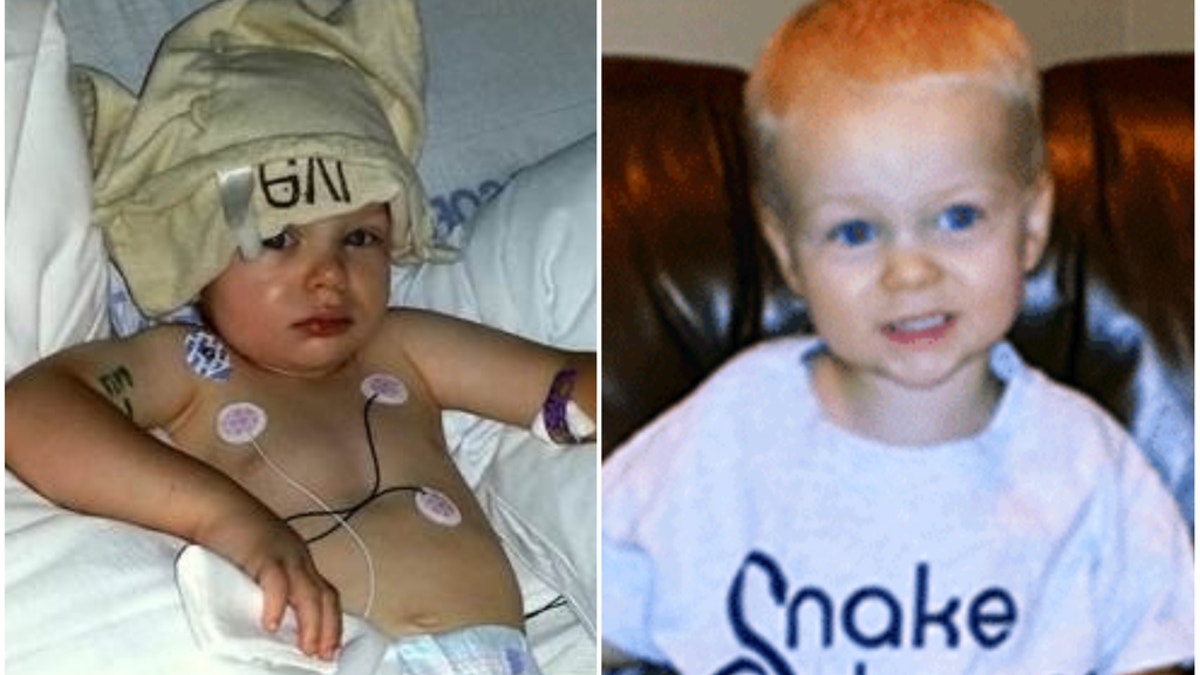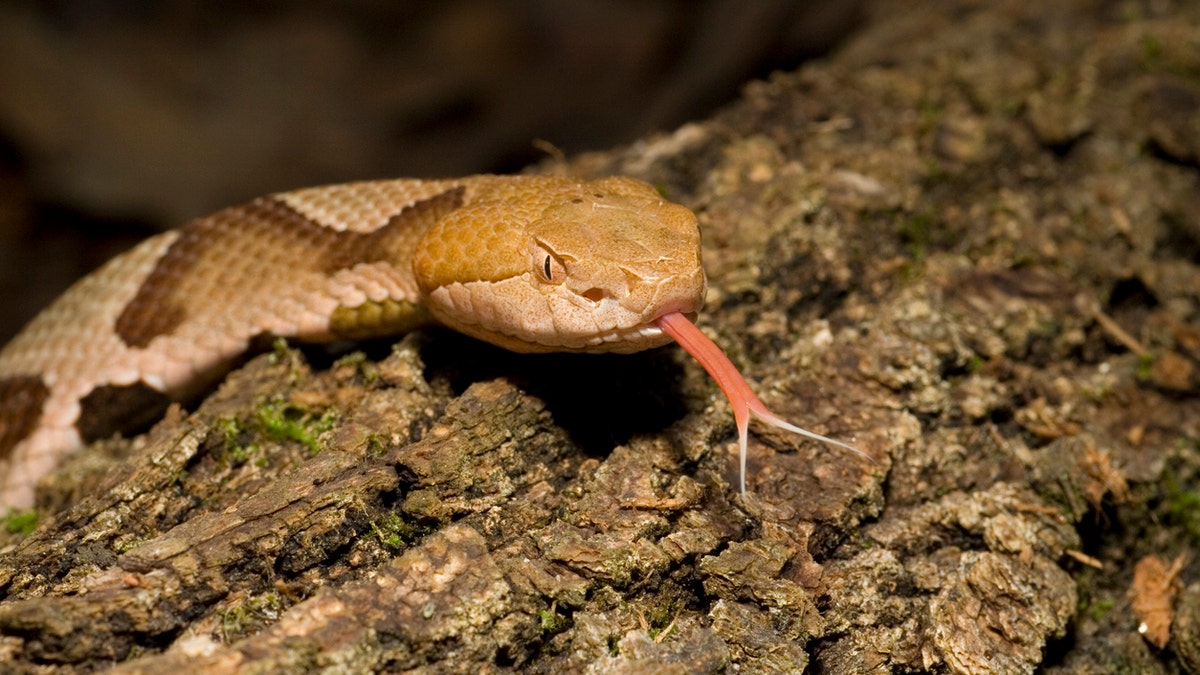
Levi Fisher, 2, was hospitalized for four days after being bit by a copperhead snake near his Atlanta-area home in Aug. 2014. (Christina Fisher)
With the backyard of their Atlanta-area home surrounded by woods and a creek, Christina Fisher and her husband knew they'd have to teach their four kids about the beauty — and dangers — of nature at an early age.
From poison ivy to venomous snakes and spiders, Fisher's four kids learned it all. But nothing truly prepared Fisher for what she would face in the summer of 2014.
On Aug. 2, 2014, Fisher heard her then-2-year-old son's piercing scream as he tripped up a rocky step while following his father and three siblings to the front door.
"It's a scream that all parents recognize — more intense than 'I fell and scraped my knee,'" Fisher told Fox News. "There was an intensity with which he was screaming."
VENOMOUS COPPERHEAD SNAKE SPOTTED NEAR WASHINGTON'S NATIONAL MALL
"There was an intensity with which he was screaming."
Fisher sprinted outside and scooped up her son, Levi. As she was cradling him, she saw a 3-foot-long creature move in the corner of her eye.
"I was face-to-face with a snake," Fisher recalled, adding that the skin of the serpent was like camouflage on the rock. "There's no way he saw that thing."

A copperhead snake is one of the most likely species to strike if it feels threatened, according to reports. (Mark Kostich)
The snake had struck Levi twice in the back of the hand. Fisher yelled for her husband as she rushed the toddler inside and called 911.
Her husband, an Eagle Scout, called out, "It's a copperhead!"
By the time the ambulance arrived, Levi's hand was "swollen and bruised beyond recognition." Within 18 minutes, he arrived at Children's Healthcare of Atlanta, where he was hooked to an IV and given morphine to ease the pain. A doctor traced how far the venom had traveled up his right arm with a marker.
Dr. Scott Batchelor, a pediatric emergency doctor at Children’s Healthcare of Atlanta, told Fox News that copperhead snake bites are the most common poisonous bites he sees in the emergency room. Most of the wounds are found in the hands, wrist, forearm, feet or ankles. While the venom isn't typically fatal for humans, it can cause serious health complications for children.

Levi Fisher, 2, was released from Children's Healthcare of Atlanta after spending 4 days in the PICU. (Christina Fisher)
RARE TWO-HEADED SNAKE DISCOVERED IN BACKYARD
"With certain patients, like toddlers, a big dose of venom from an adult male will have more of an effect," Batchelor, who didn't treat Levi, explained. "Toxicity is related to the size of the victim."
With young children, there can be localized soft tissue effects such as necrosis, pain and swelling, Batchelor said. An oozing bite can also affect blood pressure and if the dose is strong enough, it can impact the heart.
That was the main concern with Levi. The venom had traveled halfway to his heart by the time he arrived at the hospital, so doctors decided to treat him with antivenom. He was given 24 vials of the drug and spent four days in the hospital's pediatric intensive care unit (PICU) before he was released.
"In the months afterward, we logged countless hours visiting with a hand surgeon, physical therapist, wound care specialist and hematologist," Fisher explained in a blog post recently shared by Children's Healthcare of Atlanta, adding that her son was left with a scar on his index finger. "Copperhead venom thins the blood of its victims, and it would be nearly three months before Levi’s blood clotting factors were back in the safe range."
ALABAMA MAN PARALYZED, 'FIGHTING FOR HIS LIFE' AFTER CORAL SNAKE BITE, FAMILY SAYS
The mother decided to share Levi's "terrifying" tale after connecting with the family of 6-year-old Ford O'Neill, who was bitten by the same type of snake in Lake Burton in late May.
"I didn't know it, but the snake was inside the bush, and the snake popped out, and it bit me on the pinkie," O'Neill told WSB-TV.
Batchelor said both families did the right thing by immediately bringing their children into the ER.
"The safest thing they can do it let a medical professional evaluate it," Batchelor said. "If it's a a venomous bite from copperhead see some symptoms localized."
"I hope [Levi's story] will help parents show a little bit of extra caution with kids," Fisher said. "We tell them to look both ways before they cross the street — you should look when you're playing outside in the yard also."
Batchelor shared some safety tips for those who believe they have been bitten by the venomous reptile:
- Do not apply a tourniquet
- Do not cut into the wound or attempt to squeeze out the poison
- Do not submerge under water
- Clean the wound with a washcloth
- Get to a medical professional immediately
